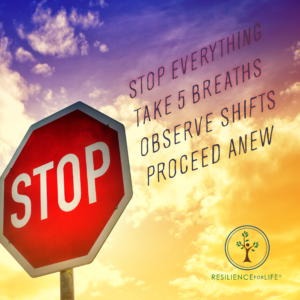
Working as a stress reduction professional has made me keenly aware of my ability to pick the path of least stress. I’m not always successful, but knowing that my suffering is a result of the choices I make is illuminating – and humbling.
Recently, I saw an interview with a man who was wrongly interred at Guantanamo and held there for 14 years. When he arrived, he knew not a word of English. While in prison, he taught himself English and wrote an international bestseller. After 14 years, he was released and flown back to his home in Mauritania. You can watch the interview here: http://www.cbsnews.com/news/tortured-at-guantanamo-former-inmate-finds-forgiveness/
It’s an astonishing story, because in spite of suffering unspeakable torture and stress he not only survived, he thrived. Exhibiting a keen sense of humor and seemingly little, if any bitterness, he exudes a positivity that is remarkable. He’s not immune to acknowledging the missteps that led to his capture, either. His resilience is nothing short of remarkable and a clear testament to the human spirit.
Most of us will never find ourselves in a detention camp. And yet, we’re often caught up in reactive mental and emotional states, which wear down all aspects of our being and are themselves a kind of prison.
What can we do to retreat from reactive responses that are sure to lead to suffering?
One of the best ways to minimize reactivity is to enlist new and responsive ways of dealing with life’s challenges. When we have a behavior that provides a healthy alternative, we’re more likely to leave behind that which is not serving us.
One practice that helps to create a space between stimulus and response is the STOP practice.
The Practice
When faced with a challenge or any situation that’s upsetting, silently repeat the letters S-T-O-P and contemplate the four steps, outlined below. Take your time working through the acronym. As it becomes familiar, the process becomes quicker and easier.
S – (STOP) – Just that. Take a momentary break. Shift awareness from the challenge to a state of witnessing, as if you were watching a video of the situation. Stopping – even for a moment – is a conscious and powerful decision to pause the stress response.
T – (BREATHE) – Take 3-5 slow, deep breaths, with an even ratio between the inhalations and exhalations. Breathe in whatever fashion feels most easeful for you, through the nose or the mouth. The most important thing is to take your time and be gentle.
O – (OBSERVE) – Notice the tight places in your body/mind and begin to direct the breath to those places. Have an intention to exhale the tightness. Notice if you sense any changes. Often, a few breaths will begin shift your mental and physical state. Expand your circle of observation. Even in the midst of the challenge, can you find at least one good thing? Is there something pleasing to your senses? A beautiful day? A work of art? The sun’s rays coming through a window? The fact that you’re alive? Immerse and ground yourself in this multi-layered awareness.
P – (PROCEED) – Having received the benefits of the previous 3 steps, you’re likely to make clearer decisions regarding next steps. It may be a revelation to realize how many options you have once you’ve stopped the reactive response. Even if the next steps aren’t crystal clear, slowing down and taking time will help you to see possibilities that might have otherwise been hidden.
A practice like this is not intuitive, but over time, it becomes just that. We develop an ability to not only meet life’s challenges with more grace and to make wiser decisions, we also save our mind, body and spirit from a lot of wear and tear.
It’s important to remember that this doesn’t change difficult situations. It’s not magic; it’s not woo-woo. But it is a direct call to our higher self – a self that can make the best decisions available under whatever the circumstances may be.
Try this for one week when you encounter stressful situations. Remember to S-T-O-P. It makes a difference.


Thank you Jaymie,
I found this to be very helpful. Even though you’re a stress reduction professional, I love that you are willing to admit that you aren’t always successful managing stress!
Each and every day, it’s an ongoing challenge.
Thank you, Lisa. I’m glad you found it helpful.
I’m also glad my confession that I’m not always successful managing stress resonated with you.
We’ll all human, aren’t we? Onwards and upwards~
Cheers,
Jaymie
Thank you, Lisa. I’m glad you found it helpful.
I’m also glad my confession that I’m not always successful managing stress resonated with you.
We’ll all human, aren’t we? Onwards and upwards~
Cheers,
Jaymie
Jaymie,
Great article! As a therapist I am always looking for new ways to help my clients manage stress. It seems to be at the root of most of the common problems faced by people and once they learn how to manage that effectively then it opens the door for everything else to fall in the place.
Thanks,
Kelly
Thanks for your comment, Kelly. I appreciate your sharing your perspective on managing stress. It’s ‘invisible’ in many ways, but so essential to wellbeing.
Jaymie,
Great article! As a therapist I am always looking for new ways to help my clients manage stress. It seems to be at the root of most of the common problems faced by people and once they learn how to manage that effectively then it opens the door for everything else to fall in the place.
Thanks,
Kelly
Thanks for your comment, Kelly. I appreciate your sharing your perspective on managing stress. It’s ‘invisible’ in many ways, but so essential to wellbeing.